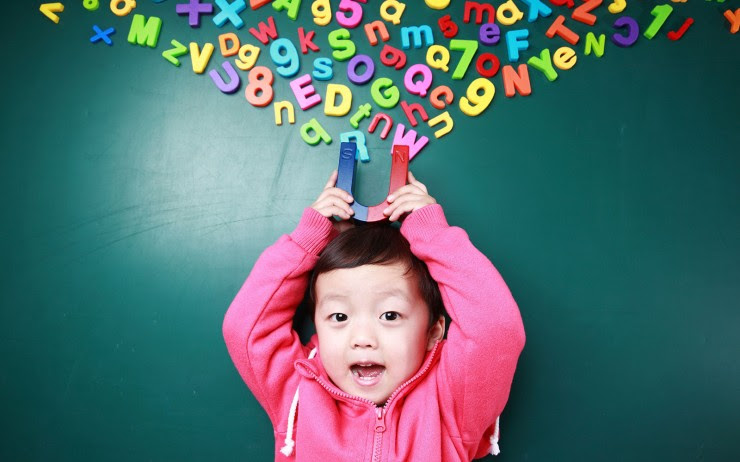If you have any experience with children, you’ve probably seen a toddler have a meltdown. Sometimes called tantrums, meltdowns are unpleasant and often distressing experiences for parents, children and carers alike, but are an inevitable part of children growing up and learning about their emotions. In this blog, we’re going to explore meltdowns in depth, including when and why they occur, why they can actually be important opportunities to teach emotional management and how to model positive emotional coping skills.
When do meltdowns occur?
Meltdowns usually begin sometime after a child turns one and before they reach the age of four. They can be short, only a minute long, or can last for several hours. Meltdowns often include vocal signs like crying, screaming, yelling, and physical behaviours like stamping feet, hitting (themselves, others or objects), rolling on the floor, breath holding and hiding. To parents, it can feel like they frequently occur in the most public of places, such as the supermarket, the park or at family events, but they’re also just as likely to occur at home; in the kitchen at lunchtime or the bath before bed.
Times of change or transition, like when preparing to leave for example, are often triggers, and make the management of tantrums extra tricky because they often happen at incredibly inconvenient moments. When your child has a meltdown, it can be shocking, embarrassing and upsetting, so many parents may resort to yelling, pleading or bribery in an attempt to stop the behaviour. While these are completely natural responses, they are unfortunately more likely to unintentionally hurt rather than help in a meltdown situation.
Why do meltdowns occur?
Meltdowns are a response to a child or toddler being overwhelmed, and, in almost all cases, are not something they have the ability to control. They usually happen when a child’s brain is over-stimulated and is getting more information than it can cope with, whether that be from sensory input, such a sights, sounds or tastes, or emotional input in the form of strong feelings. This is known as sensory overload.
It’s hard to know exactly how your toddler feels in these instances, because they can’t explain in a way that you can understand, but they probably feel frustrated, scared, angry, worried, jealous, bored, confused or sad, and most commonly all of these things at once. They might also be hungry, thirsty and tired, all of which are things that reduce our tolerance of uncomfortable situations and emotions.
It’s easy to understand why an overload situation is very overwhelming, especially for toddlers who do not yet have the language or understanding necessary to be able to express their feelings, and usually these intense feelings come out in an intense way, like the behaviours we mentioned above.
Why meltdowns can be a positive thing
Although often highly disruptive and difficult to experience, meltdowns present valuable opportunities to help teach children how to recognise and manage their emotions, which aids them in learning about themselves.
Every child is wired differently, some are naturally calm, and easy-going, and might have meltdowns very rarely, while others are more easily frustrated or overwhelmed, which can make them more prone to meltdowns. This difference in temperament is also often linked to emotional management; some children have a natural aptitude for self-regulation and others will struggle with it more, depending on the way in which they experience the world around them.
Self-regulation
Self-regulation is the conscious control of your thoughts, feelings and behaviours, or more simply, the ability to handle your emotions and attention in a way that allows you to manage behaviour, complete tasks, participate in activities, solve problems and control impulses. Unsurprisingly, it’s a difficult skill for children to master.
Initially, children’s capacity for self-regulation is small, so they rely heavily on others in their lives, like their parents and educators, to provide co-regulation. Co-regulation is the practice of providing comfort, support and modelling to aid children in understanding, expressing and controlling their feelings and actions. It requires one to pay close attention to the child and be able to recognise the cues they are giving to respond with the appropriate level of support that the child needs in the situation.
Co-regulation
When co-regulation is practiced effectively it allows children’s needs for things like comfort to be met and teaches them that the adults in their life (parents, family members, educators etc.) will be there to provide support when they need it. Consistently having their needs met helps children to build trust and facilitates an environment in which they feel valued (through being responded to), which paves the way for learning socio-emotional concepts like self-regulation.
Children’s ability to self-regulate grows over time, and their dependence on external regulation diminishes as they learn to independently execute the skills that have been modelled for them. Slowly, they will be able to manage everyday scenarios autonomously and will only rely on co-regulation in unfamiliar or stressful environments.
Modelling constructive emotional coping skills
Co-regulation is a meaningful and purposeful way to aid children in managing their emotions, however, modelling emotional coping skills is another important aspect of the issue. It is well known that children learn through observation, both of the things we want them to pick up on, and the things we’d rather they not notice, but have you ever stopped to think about what you are teaching your child when you react and respond to stimuli?
We’re often conscious of the ways that we demonstrate certain skills and behaviours to children, like washing our hands before eating or putting shoes on to go outside, but we are also subconsciously modelling our values, attitudes and responses 24/7. When children observe the adults in their life expressing and managing difficult emotions like sadness, irritation, anger and worry in constructive ways, they absorb that information, which is a form of learning how to cope with those things themselves.
The most important thing to remember is that children are not having meltdowns deliberately, and are likely just as distressed and upset by them as you are, if not more so. Even when it is difficult, responding with empathy and acknowledging and validating their feelings goes a long way towards helping them to feel supported and creating an environment which fosters the development of self-regulation skills.
Meltdowns are truly a tricky topic, and there’s no single solution to managing or preventing them that is guaranteed to work for every child. We hope this blog has helped you to understand why toddlers have meltdowns, and that the information provided has been useful in understanding how to manage them to help keep you and your child happy!



